How to Know a Cat’s Age
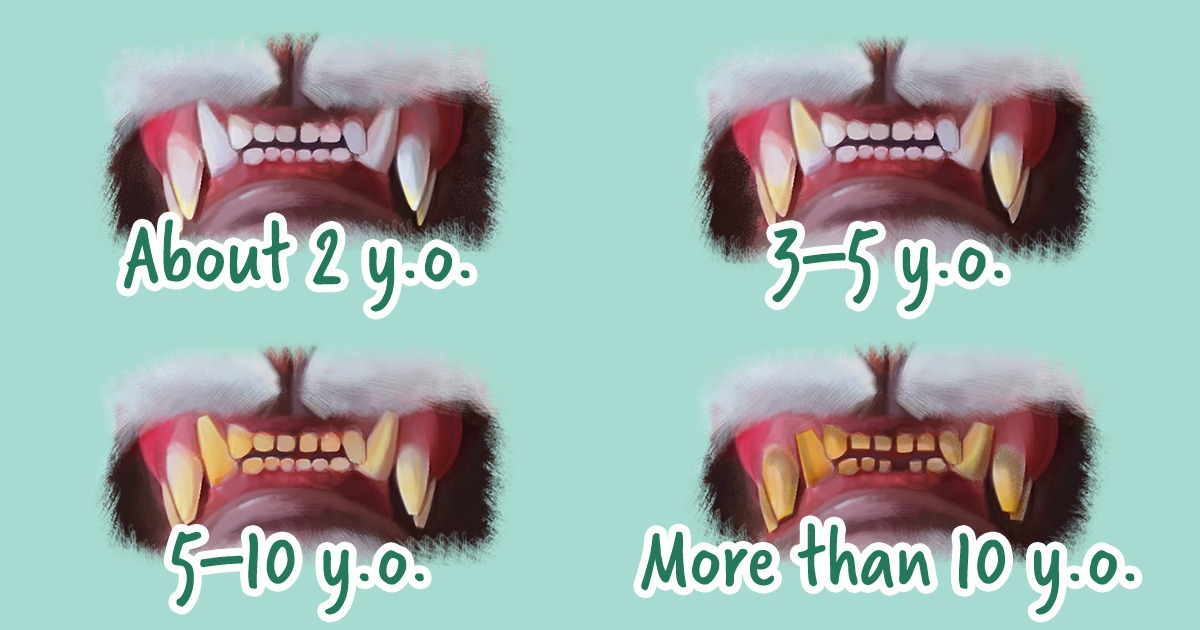
When we buy a kitten, we know its age. But things are more complicated with animals that are adopted from shelters or picked up on the street. It seems impossible to learn their age, but still, there are some ways we can find out.
5-Minute Crafts is going to tell you how to determine how old your cat is.
Teeth
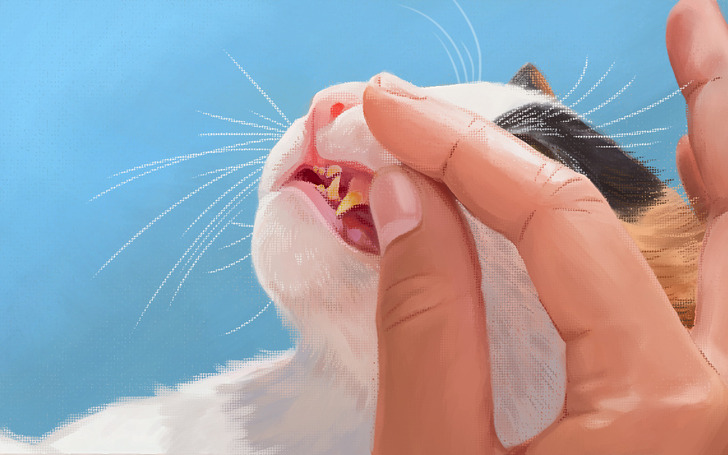
Teeth play one of the key roles in determining the age of a cat. A kitten’s baby teeth start to come in when they are about 2 weeks old. By 8 weeks, kittens’ baby teeth have all erupted. When the kitten is 4 months old, these teeth begin to fall out and adult teeth grow in their place. Normally, the process of changing teeth in cats ends by the time they’re 7 months old. After that, it becomes more difficult to determine the age of the animal.
If your cat’s teeth have already changed, try to assess their condition. The degree of their wear and tear, as well as tartar buildup, can help you to find out the animal’s age. A bit of tartar, especially on the cat’s teeth against the cheek, can reveal that the cat is anywhere from 1 to 2 years old. The more tartar there is, the older the cat likely is.
- By the age of 2, the cat might get a bit of yellowing on the teeth.
- The animal, at age 3 to 5, might get increasingly yellow teeth.
- A cat aged 5-10 usually has noticeably yellow teeth.
Worn-down teeth lose their sharpness and look more lackluster. Some of their ends might be worn out or even broken off.
- At the age of 5, a cat’s teeth might show signs of wear.
- At the age of 5 to 10, these signs become clearer.
- Cats older than 10, as a rule, have heavily worn-down teeth, and some of them are even missing.
However, just like humans, cats’ teeth are different. A young cat might have a lot of tartar, while an adult cat might have a little of it. Moreover, today there are many options for taking care of animals’ teeth in home conditions. So if the pet owner brushes their cat’s teeth thoroughly, even an older animal can avoid having dental issues.
Puberty
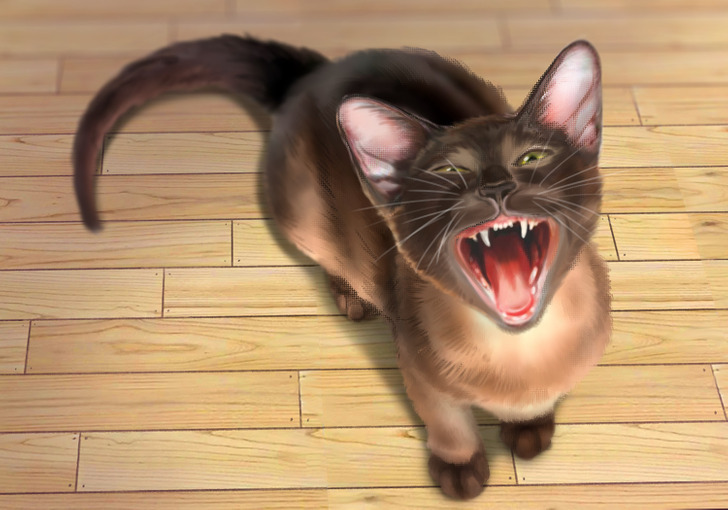
The degree of a cat’s puberty can help determine its age. Males usually reach maturity by 6 months. During this period, they begin to spray their territory.
Females reach sexual maturity with the first heat (estrus cycle), somewhere between the ages of 5 and 9 months. At this time, cats usually make loud sounds that are meant to attract males. It is believed that cats are most fertile between the ages of 18 months and 8 years.
Weight and body physique
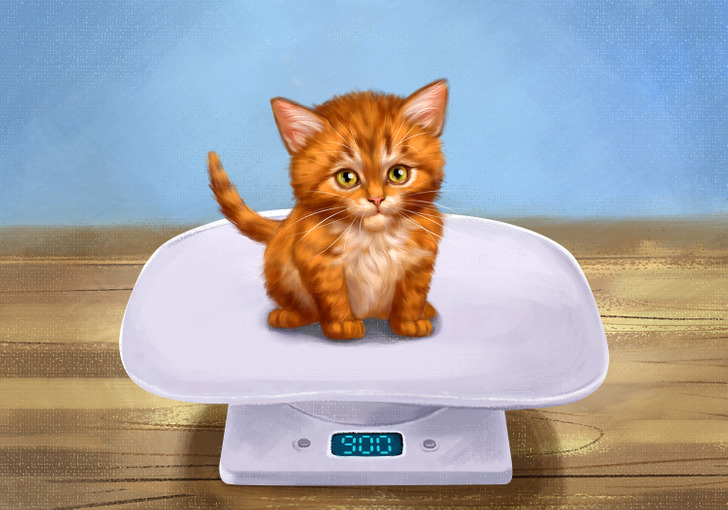
Kittens’ ages can be determined by their weight. It is believed that they gain about a pound every month. That means by the age of 3 months, kittens weigh about 3 pounds, then 4 pounds by the age of 4 months. However, this method is not very reliable. If the animal is not completely healthy, its weight won’t correlate accurately with its age.
Most cats reach their full size by the age of one. But some breeds, such as the Maine Coon, can gain weight up to the age of 4.
Young cats have better muscle tone because they are more active. Aged cats might be bonier on the rump or shoulder blades and be saggier-skinned.
Eyes

Another indicator of a cat’s age is its eyes. At the age of 6 or 7, a cat’s eye lenses become denser. When checked with an ophthalmoscope, there might be some darkening in the eye. The same thing happens with humans at the age of 40. Such changes usually go unnoticed for the owners. But when the cat turns 10, its eyes might get a little cloudy.
With age, the iris of a cat’s eyes might change. Its inner part may break down, and the pupil will look larger. This is called iris atrophy. Sometimes, the inner edge of the iris becomes wavy. A specialist should be checking the animal’s eye health throughout its life.
Fur
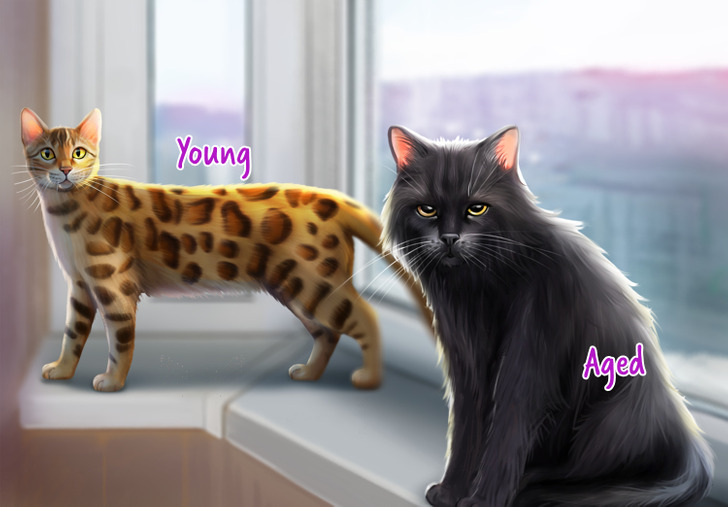
Kittens’ fur is normally short and dense — in young cats, it is thin and soft but becomes thicker and rougher with age. Its color can change too, as it can darken or get lighter. Senior cats often get gray hair.
Cats try to take care of their fur. While young cats do it avidly, senior cats oftentimes can’t take care of their fur that thoroughly.
Sometimes teeth issues, which can cause discomfort for a cat, prevent it from taking care of its fur. Gaining extra weight might be another reason they stop caring for their fur. A plump cat is no longer so flexible and mobile. Arthritis can also make it impossible for your pet to groom its fur because any twisting can be very painful.
Activity
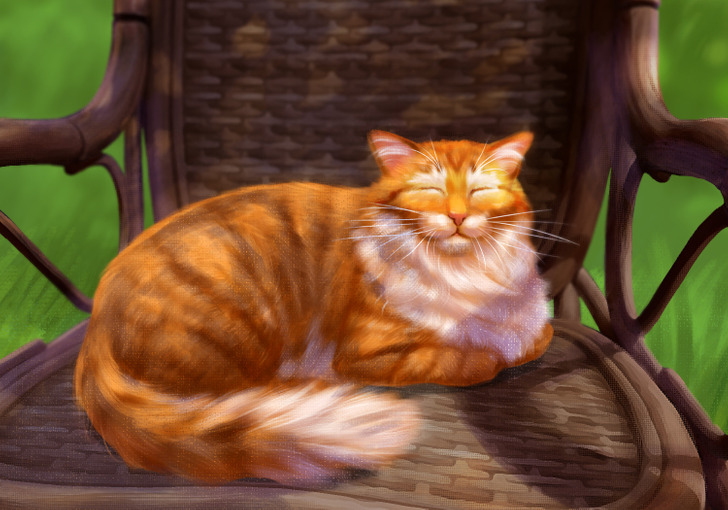
The degree of your cat’s activity can also say a lot about its age. It is believed that the older the cat is, the less active its lifestyle is.
Senior cats and kittens should sleep for about 20 hours a day. Adult cats usually rest for 12-15 hours. Of course, everything is very individual and depends on the animal itself. However, if you watch your cat for several days in a row and calculate how many hours approximately it sleeps, you’ll be able to determine whether it’s an adult or a senior.